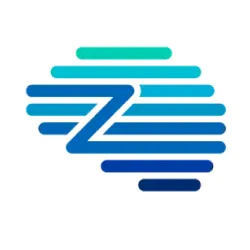TL;DR
- Procurement cost savings for mid-market firms require more than discounts — they focus on efficiency, compliance, and resilience.
- Traditional cost-cutting often backfires, creating risks like supplier failure, hidden costs, and employee friction.
- Smarter strategies include compliance control, AP automation, supplier scorecards, and spend forecasting.
- AI and automation unlock additional savings through analytics, predictive insights, and faster sourcing.
- CFOs value procurement savings when linked to business outcomes such as EBITDA impact, cash flow, and growth enablement.
Why Procurement Cost Savings Look Different in Mid-Market Firms
Large enterprises can negotiate volume discounts and long-term supplier contracts. Mid-market firms do not have that leverage. Instead, they must find savings without sacrificing agility or supplier relationships. For CFOs wearing the procurement hat, the challenge is balancing discipline with flexibility.
Procurement cost savings for mid-market enterprises should therefore go beyond tactical cuts. They must focus on sustainable efficiency, value creation, and resilience — all while keeping the company growth-ready.
The Pitfalls of Traditional Cost Savings Approaches
Chasing the lowest price often backfires. Mid-market procurement teams face risks like:
- Supplier failure: Over-pressured suppliers may cut corners or collapse.
- Hidden costs: Short-term savingsx can lead to higher quality or logistics costs later.
- Employee friction: Overly rigid savings policies frustrate staff and slow down growth.
This is why procurement ROI for mid-market companies must be defined more broadly than just cost reduction.
Read more: Measuring Procurement Impact: KPIs That Matter for Fast-Growing Companies
Smarter Savings Strategies for Mid-Market Procurement
Mid-market leaders can achieve savings without compromise by:
- Improving compliance: Ensuring purchases follow contracts and policies.
- Standardizing intake: Capturing all requests through a guided process to reduce maverick spend.
- Automating AP: Preventing duplicate payments and ghost invoices.
- Using supplier scorecards: Driving accountability with performance-based contracts.
- Forecasting spend: Anticipating demand to avoid rush purchases at premium costs.
Read more: Supplier Risk-Scoring Models: Protecting Your Supply Base from Disruption
Linking Procurement Cost Savings to Business Outcomes
For CFOs, cost savings are only credible when tied to financial results. Procurement teams must connect savings to:
- EBITDA impact: Savings that improve profitability.
- Cash flow: Faster approvals and AP automation free up working capital.
- Resilience: Supplier diversification reduces costly disruptions.
- Growth enablement: Agile procurement supports new product launches and expansions.
Read more: Real-Time Budget Visibility: Tools and Techniques for Emerging Enterprises
The Role of AI in Unlocking Procurement Cost Savings for Mid-Market Firms
AI and automation amplify savings potential for lean teams:
- Spend analytics: Identify leakage and consolidation opportunities.
- Predictive forecasting: Anticipate spend patterns to negotiate better.
- Generative AI: Draft sourcing documents and RFPs faster.
- Process orchestration: Reduce manual effort across the S2P cycle.
Read more: Why Process Orchestration Matters: Unifying Procure-to-Pay Workflows
Conclusion
For mid-market enterprises, procurement cost savings must be strategic, not just tactical. By focusing on compliance, automation, supplier performance, and AI-driven insights, procurement leaders can reduce costs while enabling growth.
Ready to see how Zycus helps mid-market firms deliver sustainable procurement savings? Book a demo.
FAQs
Q1. What does procurement cost savings mean for mid-market firms?
Procurement cost savings for mid-market firms refers to reducing overall spend through efficiency, compliance, automation, and better supplier management, rather than just chasing the lowest price.
Q2. Why is procurement cost savings harder for mid-market companies?
Unlike large enterprises, mid-market firms lack volume leverage for bulk discounts. They must balance cost discipline with flexibility, supplier resilience, and growth.
Q3. How can mid-market companies achieve sustainable procurement cost savings?
They can achieve sustainable savings by improving compliance, automating AP, using supplier scorecards, standardizing intake, and forecasting spend to prevent hidden costs.
Q4. What role does AI play in procurement cost savings for mid-market firms?
AI enhances savings by enabling spend analytics, predictive forecasting, generative AI for sourcing documents, and process automation to reduce manual effort.
Q5. How should procurement cost savings be measured in mid-market organizations?
Savings should be tied to business outcomes such as EBITDA impact, cash flow improvements, supplier risk reduction, and procurement’s role in supporting growth.
Q6. What are the risks of traditional cost-cutting in procurement?
Chasing the lowest price can backfire, leading to supplier failures, hidden logistics or quality costs, and employee resistance that slows down growth.
Related Reads:
- Negotiation in Mid-Market Procurement: Blending Human Skills with AI Metrics
- The Adoption Deficit: Solving the Procurement Change Challenge in Emerging Enterprises
- Building Resilient Supply Chains: Risk-Mitigation Strategies for High-Growth Companies
- From Chaos to Control: Fixing Vendor Master Data and Rogue Spend with AI
- Strategic Procurement Priorities for 2026: A Mid-Market Survival Guide
- Flexible Spend Policies for Mid-Market Companies in Hybrid Workplaces
- Building Resilient Procurement Teams in the AI Era: A Mid-Market Playbook








































